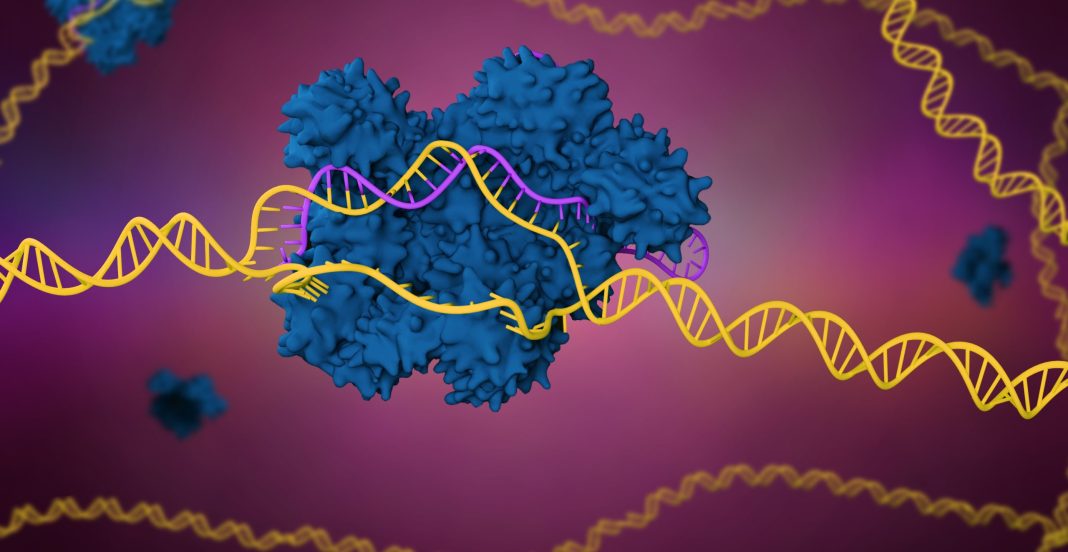Despite the copious demands of his administrative positions as the White House chief science advisor (and until last year, the director of the NIH), Francis Collins, MD, PhD, has continued to run a research lab at the National Institute of Health’s National Human Genome Research Institute (NHGRI) with a long-term focus on type 2 diabetes (T2D) as well as the application of newer forms of precision genome editing, such as using base editing to treat progeria in mouse models.
In a new study published in The CRISPR Journal, Collins and his colleagues have brought these two strands together, describing a new workflow for using prime editing to generate specific single-base variants in induced pluripotent stem cells (iPSC) with specific applications in T2D research.
Details of the work are published in a paper titled, “Generation of Human Isogenic Induced Pluripotent Stem Cell Lines with CRISPR Prime Editing.” According to the paper, the team designed and optimized a CRISPR-based prime editing protocol for engineering stem cell lines and used it to generate 27 iPSC lines carrying heterozygous and homozygous alleles for six causal single nucleotide variants (SNVs) associated with T2D risk.
Previous studies have linked a host of environmental and genetic factors to the development of T2D. Large association studies identified hundreds of genetic variants that are associated with diabetes—more than 1,200 associations—but it’s unclear which variants are causal and which are simply bystanders along for the ride. Differences in individual genetic backgrounds also make it challenging to identify and prioritize the most important variants.
Prime editing was an effective tool for answering these kinds of questions because it allowed the Collins lab to make precise edits to DNA and explore links between those changes and particular phenotypes, according to Lori Bonnycastle, PhD, a staff scientist in NHGRI’s molecular genetics section and lead author on the paper. For example, they could make three edits to the same position in distinct iPSC lines, differentiate them in beta cells, and then evaluate the effects of the individual changes on phenotype.
But prime editing is still in its infancy and there are many factors to consider, many points where the process can go awry, and times where the editing components may not work as efficiently. For example, the type of sequences around the base targeted for editing can sometimes limit the efficiency of the editing apparatus.
Bonnycastle says her team had relatively modest goals for their study. They aimed to optimize the process of editing cells using prime editing enough to generate cell models that could be used for functional diseases studies. “Prime [editing] is very precise and a lot of people are working on it because it has great potential,” she told GEN. Our protocol “allows us to get close enough to where we can build the tools we need. And it can be applied in other labs.”
Overcoming challenges
Representing some two years of research optimizing the prime editing of single base changes in iPSCs, the Collins lab has largely overcome some long-standing technical challenges. Developing an optimal protocol required varying multiple parameters and then testing the outcomes. For example, they used different combinations of pegRNA and sgRNA oligos to modify the bases.
“We also played around with how we want to actually get [the editing components] into the cell,” Bonnycastle said, and “whether we wanted to put [them] in the form of a plasmid or something that actually can replicate itself in the cell.” They also redesigned the pegRNAs used for the study to make them more efficient.
Their protocol also includes multiple sequencing steps designed to check the efficiency of the editing process. Specifically, following transfection, they used next-generation sequencing to screen pooled cells to locate samples with the most edited alleles. Moving forward with just the edited pools of cells reduced the amount of work required in the next step. Next, they used Sanger sequencing to evaluate individual clones to locate those with the correct edits of interest. Lastly, they focused on just six variants, out of hundreds, based on evidence from existing studies that indicate they are most likely casual in the context of T2D.
![An image from the paper showing two panels that describe the prime editing components used in this study and the experimental process [L Bonnycastle/CRISPR J].](https://www.genengnews.com/wp-content/uploads/2024/02/images_large_crispr.2023.0066_figure1_final.jpg)
“Each part of this pipeline is [optimized] to reduce the amount of work,” Bonnycastle said. “Stem cells don’t grow very quickly, so you don’t want to spend too much time on something that doesn’t work. The idea is to pick the best pools, drill down to those ones, and then grow out these cells to find those ones that have the edit.”
It’s important to note that the team did not test all possible variations of experimental parameters, choosing to stop testing permutations once they achieved acceptable editing efficiency. “The editing efficiencies for the various prime editing system components and pegRNA designs were achieved under one transfection setting,” they wrote, meaning that they “may not be fully optimized to generate the best outcome for each of the prime editing variables tested.”
And not every combination worked. Bonnycastle noted that some of the pegRNAs the team designed failed to yield functional cell lines but that there were options that they did not try. “We probably will go for more later on, but this is where we’re at now,” she said.
According to the CRISPR Journal paper, the scientists were able to get editing efficiencies of 36% all the up to over 70% in some lines. Their protocol also resulted in a shorter wait for research-ready models. Scientists were able to go from iPSC transfection with prime editing components to validated edited pluripotent clones in 4–5 weeks.


